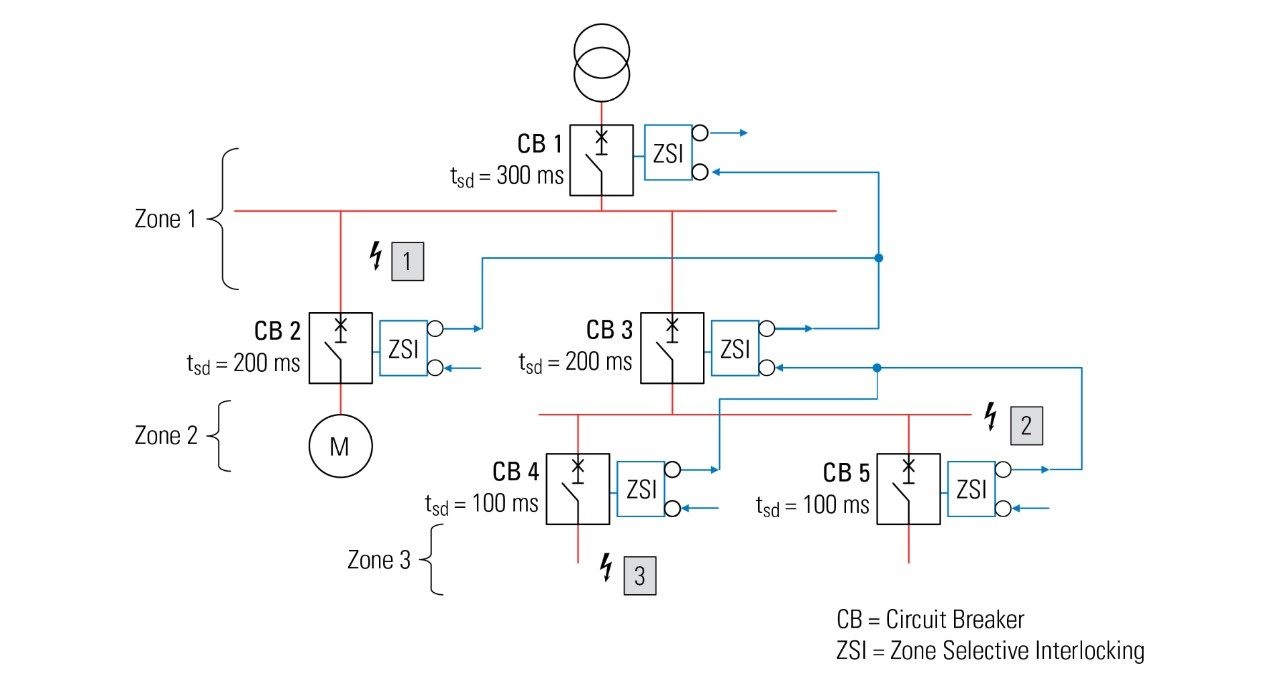When a fault occurs in your power distribution system, time is of the essence. Circuit breakers must react quickly and accurately if they are to limit service interruption, prevent equipment damage, and safeguard your people. Zone Selectivity Interlocking (ZSI) goes beyond time selectivity and current selectivity to assure faults are isolated instantaneously, right where they occur. So, the rest of your system - and your business - keeps running. ZSI is a key feature of Eaton’s NZM line of digital circuit breakers.

The purpose of zone selectivity interlocking is to speed up tripping for some faults without sacrificing the coordination of the system and interjecting nuisance trips into the system. Zone interlocking devices can communicate across distribution zones to determine whether or not a device sees a fault condition. The ZSI function is optional on PXR 25 electronic trip units and can be enabled or disabled through the menu system or Power Xpert Protection Manager software.
 When ZSI is enabled a fault within the zone of protection will immediately trip the breaker and send a signal upstream trip units to restrain them from tripping immediately. The restraining signal causes the upstream circuit breakers to follow their expected set coordination time delays so that the service is interrupted to the isolated fault area only while the fault is cleared in the shortest time possible.
When ZSI is enabled a fault within the zone of protection will immediately trip the breaker and send a signal upstream trip units to restrain them from tripping immediately. The restraining signal causes the upstream circuit breakers to follow their expected set coordination time delays so that the service is interrupted to the isolated fault area only while the fault is cleared in the shortest time possible.
The advantage of the zone selectivity feature, compared to ordinary time-delayed selectivity, is the significantly reduced delay time until tripping. This reduces the thermal and dynamical load that also protect the system. For additional safety of maintenance staff, Eaton recommend combination with maintenance mode ARMS to reduce the released amount of energy even further.
In cases of a signal wire damage the standard time-delayed selectivity function ensures the selectivity of the system.















